
Oscar Wilde once remarked, “The only thing worse than being talked about is NOT being talked about.”
So. Who’s talking about you?
Well, if you’re not happy with your answer, perhaps these practices, ideas and suggestions will help spread the word about your new website:
1. FIRST THINGS FIRST:Build remarkability into your ideas before they go public. Are you (already) worth making a remark about?
2. Give it away. If you want it to be viral, (some) of your content HAS to be free. What are YOU giving away?
3. Stop writing. Nobody’s going to read all that copy. Think images, not words. And keep it clean and above the fold. How are YOU using video?
4. Harness the power of ITunes. They have AMAZING marketing and reach a LOT of people that might not ever GO to your site. Podcasting – audio or video – is the key to reaching new audiences via web 2.0. How many people’s IPods are YOU on?
5. Use Digg and Delicious. Screw Oprah. Digg and Delicious are WAY more powerful (and a LOT less annoying) than her. Also, if someone comes to your website and doesn’t know what Social Bookmarking tool are, forget about it. Let the techies and bloggers who DO know what those buttons mean to use them to spread your message. Stop trying to educate the people who don’t “get” social networking. It’s not your job to convert them. Do people Digg you?
6. Use RSS. This is the PERFECT tool for building your permission asset. How many subscribers do YOU have?
7. Make it easy to share. Include boxes and buttons for link sharing, i.e., “Send this site to a friend” and embeddable HTML tags for videos, playlists and pictures. Are you making your website really, really easy to share?
8. REMEMBER: It’s not how many people come to your site, it’s WHO comes to your site. Eyeballs are overrated. So don’t get caught up in traffic, hits and the like. Are you focusing on the number of eyeballs or the RIGHT eyeballs?
9. People. Find raving fans that have big mouths, market to them and then get out of the way. How many fans do YOU have?
10. Build suspense. Whether you use an ezine, RSS feed or blog, have a countdown during the final month before launch. Build anticipation. For example, you could use a screen shot to drum up interest at the end of each blog post. Does anyone even KNOW about your new website?
11. Humor wins. Think about the last time you said or heard someone say: “Dude, you’ve GOT to check out this website!” More than likely, it’s because somebody, somewhere, was funny. What’s humorous about YOUR site?
12. Get ‘em at hello. Two seconds. That’s about how much time you have to convince someone that your website is worth telling her friends about. So, make sure it passes “The Cubicle Test,” i.e., If somebody walked by her coworker’s workspace, would she stop in tracks and say, “Hey, cool! What website is THAT?”
13. THREE WORDS: Other people’s traffic. What joint ventures are YOU working on?
14. Purpose. Don’t make it a website, make it a destination. Assure that people will actually stick around for more than 60 seconds. Make it community based and interactive through message boards, comments and other social networking tools. Keep the feedback loop constantly flowing. How frequently do people come BACK to your website?
15. Story. Make sure your site has a tab, box or content page that includes “Your Story.” After all, that’s all marketing is: storytelling. Because people don’t remember ads, they remember stories. NOTE: If possible, make “Your Story” a video. Let people see you doing what you do. Let people get to know you as a person, not a professional. What’s YOUR story?
16. User generated content. Enable customers to contribute and participate. Allow them to create their own profiles, accounts and usernames. Create a forum where they can discuss, share and upload their own pictures and videos with other users. They will take ownership of your website as their own and tell everyone they know. How are you giving your visitors a piece of the pie?
17. Simple. Simplicity is better, quicker, easier and most importantly, what customers crave. Could your website be explained to a five year-old?
18. Revisitability. Update new content at LEAST once a week, if not daily. This will bring people back again and again. REMEMBER: Websites are like newspapers – nobody wants to read them if they’re two years old. So, consider embedding a blog into the homepage. It works! If I had to do it again, my website and blog would be the same thing. When was the last time you updated YOUR content?
19. Ask yourself three questions. “What’s remarkable about my website?” “Why would someone come to (and stay at) my website for more than 60 seconds?” “Why would someone tell her friends about my website consistently?” Be honest. Are you evaluating your website objectively?
LET ME ASK YA THIS…
What’s your #1 tip for building buzz about your new website?
LET ME SUGGEST THIS…
Share your secret here!
* * * *
Scott Ginsberg
That Guy with the Nametag
[email protected]
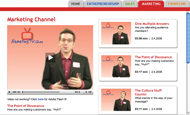 Who’s blogging about YOUR website?
Who’s blogging about YOUR website?
Tune in to The Marketing Channel on NametagTV.com!
Watch video lessons to get people talking about YOU!

 This week I’ve been working in The Bahamas with my friends at
This week I’ve been working in The Bahamas with my friends at 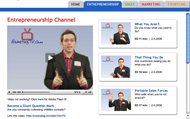 Want your staff members to open up to you?
Want your staff members to open up to you? Questions are differentiators.
Questions are differentiators.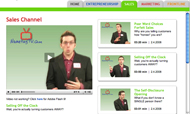 How many unsolicited referrals did YOU get this week?
How many unsolicited referrals did YOU get this week? When I was a kid, my dad would occasionally take my brother and I along on his business trips.
When I was a kid, my dad would occasionally take my brother and I along on his business trips. Last summer I was walking over to Starbucks for a meeting.
Last summer I was walking over to Starbucks for a meeting. On Main Street in Disney’s Magical Kingdom, you might recall a store called
On Main Street in Disney’s Magical Kingdom, you might recall a store called 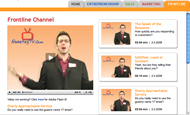 How are YOU making the mundane memorable?
How are YOU making the mundane memorable?
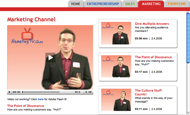 Do you have MARKET share or MIND share?
Do you have MARKET share or MIND share? Calm is approachable.
Calm is approachable. Going on a sales call today?
Going on a sales call today?  Rehearsal.
Rehearsal.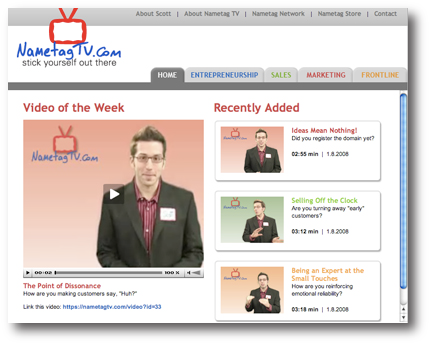
 Do you remember the first time you were asked out on a date?
Do you remember the first time you were asked out on a date?

 Practices, THEN principles.
Practices, THEN principles.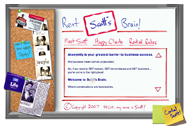 Consultants, schmonsultants.
Consultants, schmonsultants.